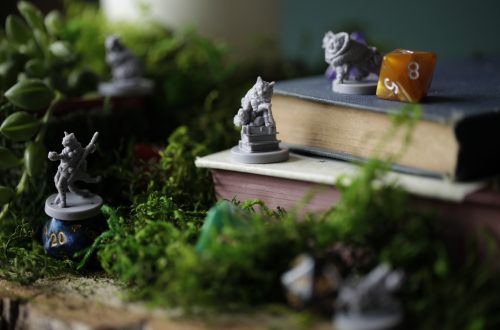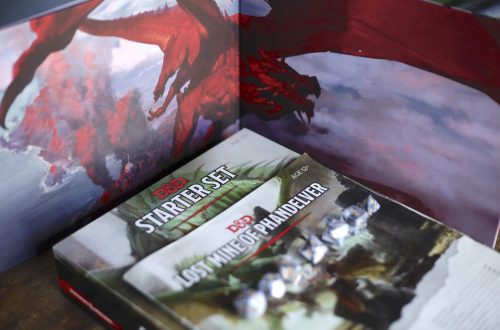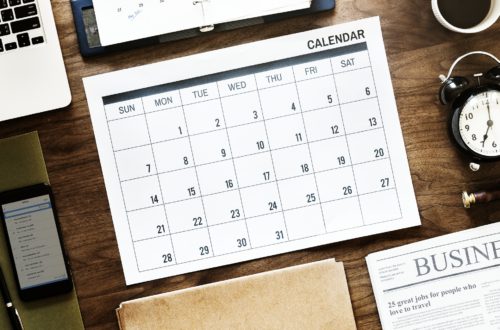Can You Play D&D By Yourself? Yes! Here’s How to Play Solo Dungeons and Dragons
Hey there! This website does contain affiliate links. If you purchase something through this page, Cats and Dice may earn a share of sales from the link. Learn more.
Dungeons and Dragons is famous for being a tabletop roleplaying game enjoyed with groups of friends new and old. Yet many players out there want to know: Can you play solo D&D? The answer is a resounding yes!
How to do that is a little trickier. It requires the right tools, along with a solid understanding of why you want to play solo D&D. After reading this, you’ll have a good sense of why you want to play D&D by yourself, which will help you with how to play and get you on your way.
Why Play D&D By Yourself?
There are many reasons you might enjoy playing D&D by yourself. Knowing which one applies to you will help you choose the best way to play solo D&D.
You Can’t Get a Group Together
This is probably one of the top reasons players want to play solo D&D. Finding people interested in playing D&D is no easy task. Your friends might not be committed, and you might not get along with strangers. This is especially tough if you can’t find anyone to run the game as the Dungeon Master. Plus, managing a D&D schedule for 4-6 people can be tricky, and sometimes you just want to focus on the gameplay.
Related Post: D&D Scheduling Giving You Trouble? These Tips Will Help.
Freedom of Choice
Having other players to bounce ideas around with can make for a compelling gameplay experience. Sometimes, though, you want to be able to make your own choices and feel like the top hero. That’s a great reason to play solo D&D. If this is why you want to play D&D by yourself, then you’ll have a lot of options.
Ease into the Rules
When you play D&D by yourself, you’ll become familiar with the structure of a D&D module and how to read it like both a player and a Dungeon Master. You will also become familiar with the skills required of a Dungeon Master like improvisation and narrative description. It goes beyond simply reading a module, too. By actually interacting with it, you’ll understand how to present these options to actual players in a full D&D game.
If you’re a more experienced player or Dungeon Master, it’s also a great way to test out homebrew monsters and items you’ve made, too.
Whether or not you plan to turn your solo D&D gameplay into a book, you can still have a lot of fun. So how do you do it? Keep reading.
How to Play Solo D&D: The Tools You’ll Need
Playing D&D by yourself costs surprisingly little. It can even be free if you do it right. You’ll need your basic D&D tools of course: a character sheet, some dice, and a writing tool. Then, choosing solo D&D tools is as varied as choosing a D&D module.
Related Post: How to Play Dungeons and Dragons on a Budget
DM Yourself
Tom Scutt’s DM Yourself is arguably the best way to play solo Dungeons and Dragons. It allows you to play pretty much any pre-existing D&D module like Lost Mines of Phandelver and Dragon of Icespire Peak. The author does note, though, that although you can manage to play any premade adventure with DM Yourself, the ruleset works best with linear games rather than sandbox games like Curse of Strahd.
DM Yourself acts as a “solo mode” rulebook so you can play D&D alone. It guides you through important modifications for playing D&D by yourself. This inclludes altering your character, how to skim the module you’re using to avoid spoilers, and running both combat and roleplay by yourself. The whole book is 60 pages, but the sections specifically on running the adventure that you’ll want to reference frequently are about 25 of those pages. It even includes a quick reference in the back so you won’t need to use the book much at all once you’re playing.
It also includes tips on playing with specific, popular modules. If you want to play an already popular D&D game with very few modifications from group play, DM Yourself is a great choice. DM Yourself also works well with one shots like Hops to It!, The Wild Sheep Chase, and A Most Potent Brew.
Solo Adventurer’s Guide
If you want a more freeform solo adventure for your D&D game and to not be confined to the limits of a pre-made module, Solo Adventurer’s Guide is a great option. With multiple tables in the back of the book to help you make the decisions a Dungeon Master would normally make, you’ll be able to put the fate of your character into the dice rather than relying on a DM. And isn’t D&D all about the dice?
To see a sample of how Solo Adventurer’s Guide works, check out this video. It’s recommended by Guilherme Bento, the creator of the module.
“Free” Versions
There is no free version of DM Yourself specifically. It’s already very affordable, but there are tools that function similarly to DM Yourself that are free.
First is the Solo D&D Guide, where a player takes you through their experience of playing a solo D&D campaign. This guide spends a fair amount of time focusing on character build and the kind of advantages you’d have with certain characters. For example, while using a character proficient in Thieve’s Tools and a good passive perception, you could decide that your character always notices traps and locks.
Next is the DM Emulator. This system largely relies on something called the Oracle System, which is a standard d6 table. Basically, whenever you have a question about something that happens in the game, the system will act like a Magic 8 Ball by giving you a yes, no, or some variation thereupon. There are also d6 tables for NPC interactions and for intervening events.
Solo D&D Books
Alternatively, if you don’t want to learn what is essentially an extra ruleset (which is completely understandable), you can always use a gamebook designed to play D&D as a solo player. Anything made by 5E Solo Gamebooks will make a great choice. These books act sort of like Choose Your Own Adventure books with two major differences.
First, the choices are a lot more complex (as they should be for D&D). You don’t simply choose what path you want to take. You’ll choose what path you want to take and then roll dice to find out the results of that choice. A negative result can be as minor as losing a few HP to as catastrophic as instant death. Not all of the roles are about your character’s health, though. Roleplay and exploration play a big role in these solo D&D adventure books, too.
Second, you will still have a character you make running through the adventure rather than making the choices yourself. Again, this is to match the traditional D&D experience as much as possible.
Solo adventure books, in other words, are a great way to play D&D by yourself without having to think through all the mechanics a DM would have to worry about. The adventures are already set up for you to run. All you need is your character and dice, just like you would for any other D&D game.
Random Dungeon Builders
Sometimes you might simply want to have a quick and traditional D&D experience but have no one to play with. In that case, you can use a simple dungeon generator and make a short dungeon crawl for yourself. The 5e Random Dungeon Generator made by donjon works really well for this.
To play solo D&D with a random dungeon generator, simply select a party of one, the level your character is at, and any other parameters that are important to you, then generate it. Read over the general features and then start in the first room and take it from there. This generator even has puzzles and traps for you to solve along the way, and hidden treasure, too. You’ll want to do your best to not read too far ahead when you skip from room to room. This will help you avoid spoilers. Otherwise, it’s pretty easy to run a generated dungeon on your own.
In order to play D&D by yourself with a random dungeon generator, you will need a copy of the Monster Manual to run the encounters. Otherwise, this is the easiest way to enjoy solo D&D with the least amount of new materials.
Choosing Solo D&D Tools
When choosing solo D&D tools, think about your answer as to why you’re playing D&D by yourself. Sometimes this will help you choose what tools to use. For example, if you want to take steps toward becoming a Dungeon Master, then you’ll want to play using DM Yourself. If you want to roll some dice and fight some monsters, then a solo book or a dungeon builder might do the trick. Once you have the tools that feel right to you, playing solo Dungeons and Dragons is as simple as following the ruleset.
If you’re still unsure of which one is right for you, make sure to read reviews and watch videos for each solo D&D tool you’re interested in. That way, you can get a sense of how the game flows, the common problems players might run into, and most importantly, which one will give you the experience you’re looking for.
Playing D&D for Two
A lot of these options work well for playing D&D with two players, too. Two-player Dungeons and Dragons has a few more options, and there are great creators putting out content to help you with that such as D&D Duet. These come from the standpoint of one player and one DM.
On the other hand, you might want to have two adventurers but find yourself DM-less. All the tools above make it very possible to play D&D with two players and no Dungeon Master. Solo books oftentimes have rules to adjust for it. Randomized dungeons will let you put in the number of players and levels, too. As for DM Yourself, simply remove the Sidekick ruleset and insert the second player.
Play Other TTRPGs Solo
While it’s clear that you can play D&D by yourself and have a great time, that may not be what you’re really looking for. It’s possible you’re simply looking for a solo tabletop RPG experience, and it doesn’t have to be specific to D&D.
If that is the case, it should be noted first that DM Yourself and other resources mentioned earlier can be used to play other tabletop games solo, too. Doing so will allow you to maximize your use out of a single ruleset.
However, some players might want something that’s not specifically catered to Dungeons and Dragons 5E. Player’s Guide to Solo Roleplay might be a good fit, then. It’s not only a guide for solo play, it recognizes that a lot of solo players have never been a Game Master before and adjusts the style of the guide accordingly. It does prompt you to build an adventure rather than playing a pre-made one, though.
For premade adventures, there are some great tabletop games designed to be played alone. The Lone Wolf Series, for example, provides a classic fantasy solo RPG experience, and it’s free to play at Project Aon. The first book explains how to get started, and you’ll use the same character as you move between books. You’ll know when to move on to the next one based on how the adventure goes.
Itch.io
Itch.io is also a great source of many wonderful solo tabletop RPGs of all genres, many of which are free. A few interesting ones include:
- Into the Woods…
- Alone Among the Stars
- The Scribe
- The Mansion Incident
- Of Moon and Leaf
- Pokemon Polyhedral
If you find a great solo tabletop RPG on Itch.io, make sure to share it in the comments for everyone to enjoy!
Finally, it’s worth noting that solo RPGs might not be truly solo. As mentioned earlier, a lot of solo games make good duet games, too. Also, rulesets like How to RPG With Your Cat allow you to play with just you and your pet. This is great because your pet is one of the few players you can always count on! Your cat can also act as a player or as the monster, depending on how you want to play (and maybe even on your cat’s personality).
Yes, you can absolutely play D&D by yourself. A solo D&D game can allow for great exploration and be personally rewarding. It can also make you a better player and a Dungeon Master if and when you join a full D&D game. In other words, there are a lot of reasons to play D&D by yourself, and we hope you have a lot of fun doing so with these tips!
Hi there! I’m Kristen. I’m a game writer, a Dungeon Master, and like you, I love tabletop games. Visit our About page to learn more about me.
I wrote this Cats and Dice article to help you enjoy gaming even more. Did it help? If so, our kitties (and our site) would be grateful for a little gift through Ko-Fi.




